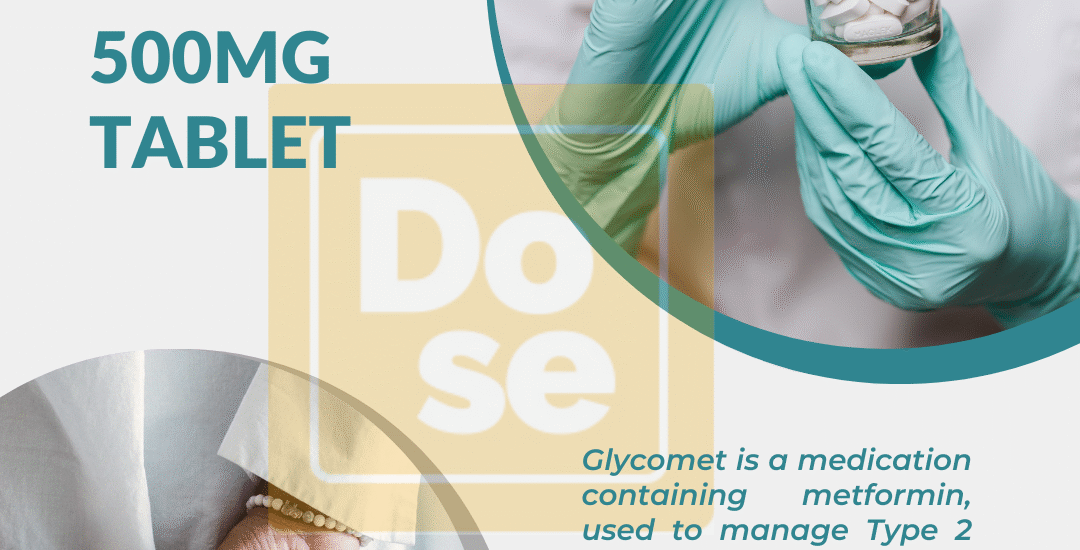Metformin hcl 500 mg is one of the most widely prescribed medications in the world for managing type 2 diabetes mellitus (T2DM). As a first-line therapy, Metformin plays a central role in blood sugar regulation, especially in individuals with insulin resistance or impaired glucose tolerance. Approved decades ago and still widely used today, its effectiveness, safety profile, and affordability have made it a cornerstone in diabetes care.
But how exactly does Metformin work to lower blood sugar levels? This comprehensive article will explore the mechanisms behind Metformin’s action, how it interacts with your body, its broader benefits, and why it remains the gold standard in managing type 2 diabetes.
What Is Metformin HCl?
Metformin HCl is a medication from the biguanide class of drugs. It is most commonly prescribed to individuals with type 2 diabetes to help control high blood sugar, especially when diet and exercise alone are insufficient.
Metformin is available in two main formulations:
-
Immediate-release (IR) Metformin
-
Extended-release (ER or XR) Metformin
Both forms are designed to reduce blood glucose levels and improve insulin sensitivity, but the extended-release version may have fewer gastrointestinal side effects and is often preferred for once-daily dosing.
The Problem in Type 2 Diabetes: Insulin Resistance
In type 2 diabetes, the body becomes resistant to insulin, a hormone produced by the pancreas that helps cells absorb glucose (sugar) from the bloodstream. As a result:
-
Blood sugar levels rise
-
The pancreas produces more insulin in response
-
Over time, this can exhaust the pancreas and worsen diabetes
Metformin doesn’t directly increase insulin production. Instead, it makes the body more sensitive to insulin and reduces the liver’s output of glucose, targeting the underlying cause of high blood sugar in many individuals.
How Metformin Lowers Blood Sugar: Key Mechanisms
Metformin lowers blood glucose through three main actions, all of which help improve blood sugar control without causing low blood sugar (hypoglycemia) in most cases.
1. Reduces Hepatic Glucose Production (Gluconeogenesis)
One of the primary ways Metformin works is by inhibiting the liver’s production of glucose.
-
The liver normally produces glucose, especially during fasting, through a process called gluconeogenesis.
-
In people with diabetes, this process can go into overdrive, leading to excessive glucose in the bloodstream, even without eating.
-
Metformin inhibits a mitochondrial enzyme called glycerophosphate dehydrogenase, which reduces the liver’s ability to produce glucose.
This action is particularly important because the liver contributes a significant portion of the body’s glucose load—so turning off this faucet is highly effective.
2. Improves Insulin Sensitivity in Muscle and Fat Tissues
Another crucial benefit of Metformin is its ability to make the body’s cells more responsive to insulin.
-
It enhances insulin receptor activity, especially in muscle cells and fat cells.
-
This helps glucose enter the cells more effectively, reducing its concentration in the bloodstream.
-
Improved insulin sensitivity also reduces the demand on the pancreas to produce more insulin.
This mechanism makes Metformin ideal for insulin-resistant individuals, which includes many people with obesity, metabolic syndrome, or prediabetes.
3. Increases Glucose Uptake and Utilization
Metformin helps increase the uptake and utilization of glucose in peripheral tissues.
-
It activates an enzyme called AMP-activated protein kinase (AMPK), which plays a major role in cellular energy regulation.
-
AMPK stimulation leads to more glucose being used for energy instead of remaining in the bloodstream.
-
It also helps reduce fat production and storage, which further improves metabolic health.
This action makes Metformin useful not only for blood sugar control but also for weight stabilization and improved cardiovascular profiles.
Other Beneficial Effects of Metformin
While its main job is to control blood sugar, Metformin offers several additional health benefits that make it even more valuable:
✅ Weight Neutral or Slight Weight Loss
Unlike other diabetes medications (like sulfonylureas or insulin), Metformin does not cause weight gain. Many users even report modest weight loss, which is helpful for managing type 2 diabetes.
✅ Lowers LDL Cholesterol and Triglycerides
Metformin has been shown to reduce levels of “bad” LDL cholesterol and triglycerides, which lowers cardiovascular risk.
✅ Reduces the Risk of Cardiovascular Events
Studies have found that Metformin use may be associated with lower risks of heart attacks, strokes, and other cardiovascular issues in people with diabetes.
✅ May Reduce Cancer Risk
Emerging research has suggested that Metformin may reduce the risk of certain cancers, particularly colorectal, breast, and prostate cancer—though more studies are needed to confirm this benefit.
✅ Improves Ovulation in Women with PCOS
Metformin is also widely prescribed for polycystic ovary syndrome (PCOS), a hormonal disorder in women. It can help regulate periods and promote ovulation, aiding fertility.
How Long Does It Take for Metformin to Work?
-
Blood sugar levels may begin to improve within a few days of starting Metformin.
-
The full effect on blood glucose may take 2 to 3 weeks, especially for HbA1c (a long-term blood sugar marker) to show noticeable changes.
-
Lifestyle changes (diet, exercise) combined with Metformin often lead to more dramatic improvements.
How Is Metformin Taken?
-
Usually taken once or twice daily with meals.
-
Starting dose is typically 500 mg, gradually increased to avoid side effects.
-
Maximum dose may be up to 2,000–2,500 mg per day, depending on the formulation and patient response.
Side Effects and Considerations
Metformin is generally well-tolerated, but some people may experience:
-
Nausea or vomiting
-
Diarrhea
-
Bloating or gas
-
Metallic taste
These side effects are usually temporary and can be minimized by:
-
Taking the medication with food
-
Starting at a low dose and gradually increasing
-
Using extended-release versions if needed
Rare but serious side effect:
-
Lactic acidosis – a dangerous buildup of lactic acid in the blood. Though extremely rare, it’s more likely in people with kidney disease, liver issues, or alcohol abuse.
Always inform your doctor if you have kidney problems or take contrast dyes for medical imaging.
Conclusion
Metformin HCl remains the first-choice medication for managing type 2 diabetes for good reason. Its ability to lower blood sugar through multiple mechanisms—reducing liver glucose production, improving insulin sensitivity, and enhancing glucose uptake—makes it both effective and versatile.
With additional benefits like weight stability, improved cholesterol levels, and cardiovascular protection, Metformin continues to be a trusted ally in the fight against diabetes and metabolic disease.
If you’re starting or currently taking Metformin, understanding how it works empowers you to take proactive steps toward better blood sugar control and overall health. Combine it with a healthy lifestyle, and you’ll give yourself the best chance for long-term success in managing type 2 diabetes.






